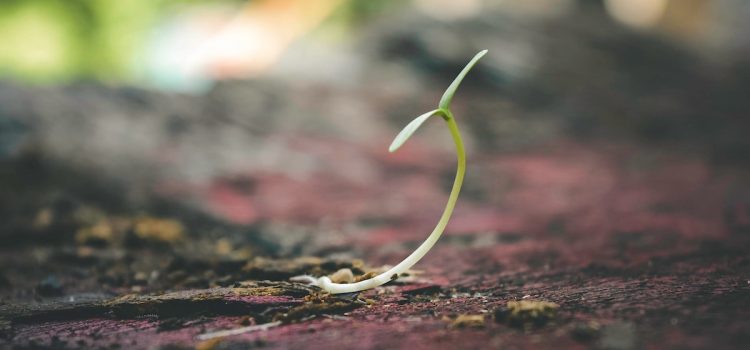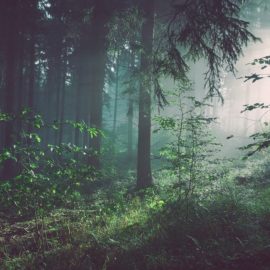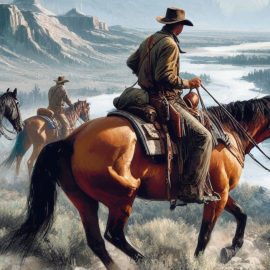

This article is an excerpt from the Shortform book guide to "A Short History of Nearly Everything" by Bill Bryson. Shortform has the world's best summaries and analyses of books you should be reading.
Like this article? Sign up for a free trial here.
What were the first terrestrial lifeforms? Why did life migrate from water to land?
Most scientists believe that the first life on land consisted of plants. Plants were followed by simple animals and, later, more complex life forms. Bill Bryson explores the timeline in his book A Short History of Nearly Everything.
Keep reading to learn a bit about these milestones in biological history.
The First Life on Land
According to Bryson, the first life on land emerged probably because of pressure from fierce competition for resources in the shallow water of the continental shelf. Scientists believe that, at that time, all the continents were clustered together into a single land mass with much less coastline than Earth has today.
In any case, he says the first life forms to appear on land were plants such as tree ferns and giant club moss. Later, animals such as millipedes and crustaceans emerged from the ocean to dwell on land. Eventually, the first vertebrates also migrated out of the shallows to become terrestrial amphibians and reptiles. Later, birds and mammals appeared as well.
Bryson notes that, although mammals coexisted with dinosaurs, these early mammals tended to be small, burrowing animals similar to mice or gophers. Large mammals didn’t appear until after the dinosaurs died out.
| The Significance of Terrestrial Vertebrates Bryson emphasizes the importance of plants and crustaceans emerging as the first terrestrial life forms, but others, such as paleontologist Neil Shubin, emphasize the emergence of terrestrial vertebrates, seeing it as a more important milestone in the history of life than the terrestrial invertebrates that preceded them. In Your Inner Fish, Shubin argues that understanding the first fish that crawled out of the water on primitive limbs and began living on land gives you a better understanding of all the animals that descended from it: reptiles, amphibians, birds, mammals, and ultimately humans. This is because the commonalities between all these creatures become more apparent when you can see how their differences are just variations of the original design. He also relates how his team discovered fossils of fish with primitive legs, unlocking some of these insights. |

———End of Preview———
Like what you just read? Read the rest of the world's best book summary and analysis of Bill Bryson's "A Short History of Nearly Everything" at Shortform.
Here's what you'll find in our full A Short History of Nearly Everything summary:
- An accessible overview of the natural sciences
- A full history of the universe, Earth, and life as we know it
- A look at the unknowns and controversies that still exist in the sciences






